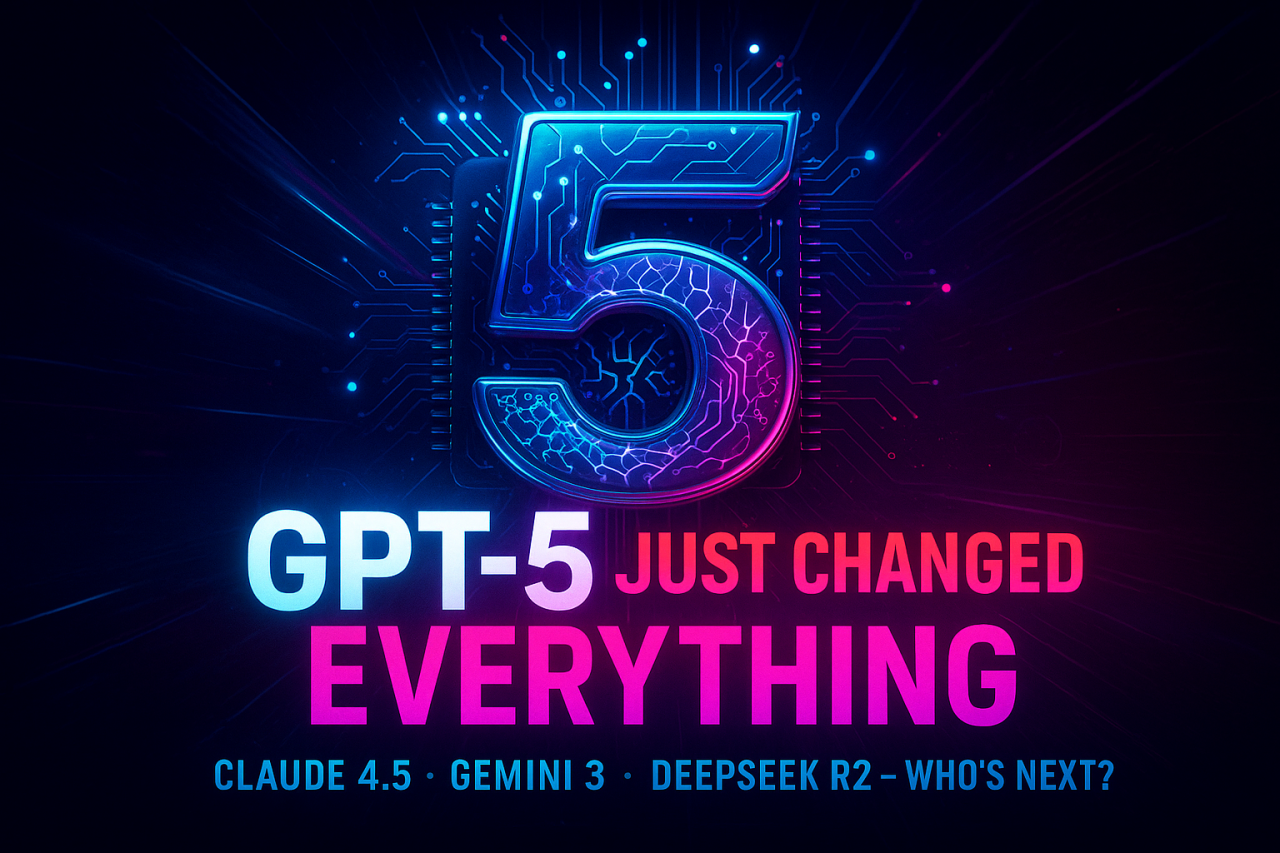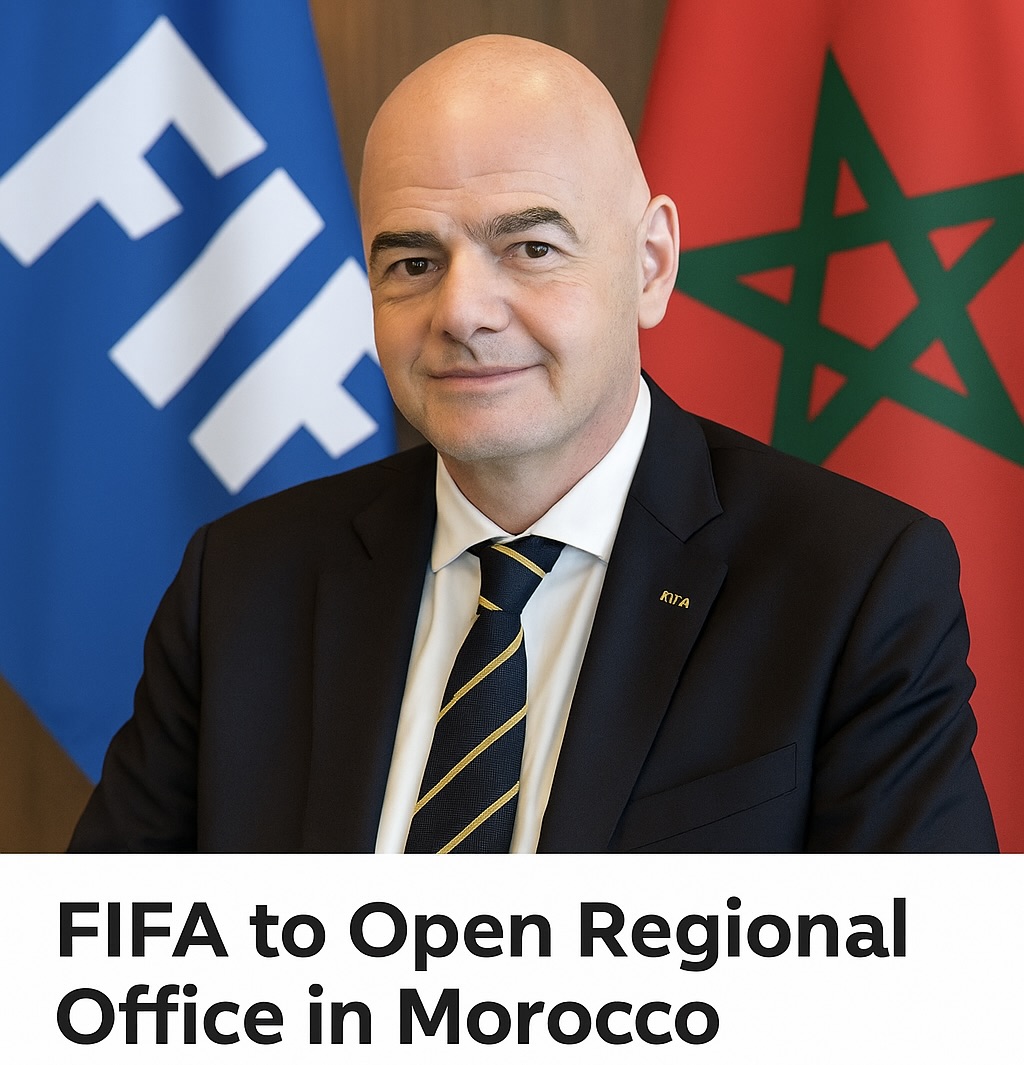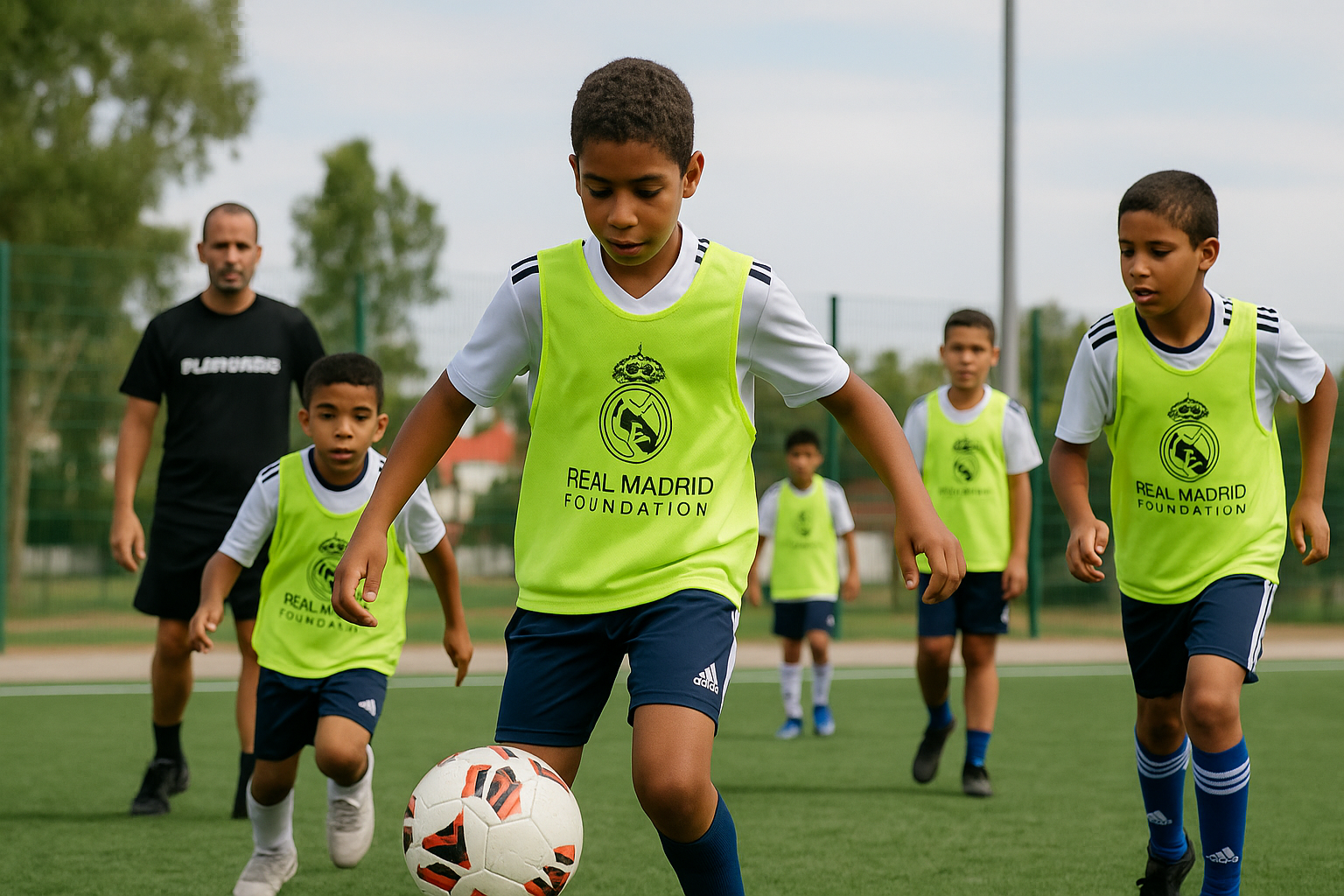sports
Another development in the Mats Hummels transfer saga sees the veteran defender entering talks with a new La Liga club, following earlier links with potential moves to Brighton and Bologna.

Mats Hummels, the seasoned German defender, is reportedly in talks with a new La Liga team, signaling a potential move away from Borussia Dortmund. As his contract nears its end, Hummels is exploring opportunities abroad, with interest also coming from Premier League side Brighton and Serie A’s Bologna. Hummels, who has been a pivotal figure in Dortmund’s defense, is weighing his options for what could be the final chapter of his illustrious career. The transfer saga is drawing significant attention as clubs vie for the veteran’s experience and leadership.
International
GPT-5 Is Here – The Dawn of a New AI Era Begins

OpenAI’s GPT-5 launch marks a turning point in artificial intelligence, promising unprecedented power and igniting fierce competition in the AI industry.
GPT-5’s Game-Changing Debut
“We are introducing GPT-5, our best AI system yet… a significant leap in intelligence over all our previous models.” — OpenAI
OpenAI officially released GPT-5 yesterday, and the hype is real. Described as a “significant step along the path to AGI” by CEO Sam Altman, GPT-5 is touted as smarter, faster, and more accurate than its predecessors. It’s the first time a GPT model “felt like you can ask a legitimate expert, a PhD-level expert, anything,” according to Altman. In other words, using GPT-5 feels less like chatting with a bot and more like consulting an all-knowing expert on any topic. The model has a massively expanded context window (up to 256,000 tokens) for handling long conversations or documents, and OpenAI claims it hallucinates far less than GPT-4 – a big relief for users worried about AI “making stuff up.”
GPT-5’s new features have stunned observers. It excels at complex coding tasks, even capable of generating entire apps from a simple prompt. Altman quips that “software on demand is going to be one of the defining features of the GPT-5 era”, meaning you can ask GPT-5 to build programs or tools instantly. The model also shines in fields like finance, law, science, and medicine, making it a versatile assistant for professionals. Perhaps most importantly, GPT-5 is rolling out to all 700 million ChatGPT users – both free and paid – ensuring a huge global audience will immediately feel its impact. OpenAI even introduced lighter variants (like GPT-5-mini and GPT-5-nano) so everyone from casual users to enterprises can tap into its power. In Altman’s own lofty analogy, the leap from GPT-4 to GPT-5 is like going from a pixelated screen to a Retina display – a quantum jump in clarity and capability. It’s no surprise many are calling this the dawn of a new era in AI.
Claude 4.5: Anthropic’s Next Move
“Claude Opus 4 is the world’s best coding model.” — Anthropic
With GPT-5 raising the bar, rival Anthropic isn’t sitting still. Anthropic’s latest model, Claude 4 (notably the Claude Opus 4.1 update), recently “dominate[d] coding tests” by scoring 74.5% on a key software engineering benchmark – outperforming both OpenAI’s best GPT-4 model and Google’s Gemini 2.5. In fact, Claude 4.1 took the crown as the top coding assistant, cementing Anthropic’s reputation for AI programming prowess. This stronghold in coding capabilities puts pressure on GPT-5, which is now expected to match or exceed Claude on such tasks. Anthropic appears to be racing to keep its edge – some observers noted Claude 4.1 felt like a “rushed release to get ahead of GPT-5”. That hints Anthropic is determined not to be left behind.
So what’s next? Many speculate an even more advanced “Claude 4.5” (or similar) may be on the horizon as Anthropic’s answer to GPT-5. While details are under wraps, it’s a safe bet that the next Claude iteration will focus on closing any gaps GPT-5 opened. We can expect improvements in general reasoning and possibly a larger context window or enhanced tool use, building on features Claude 4 already introduced (like extended reasoning with web searches and coding assistance). Anthropic has publicly said Claude 4 is “the world’s best coding model”, and they’ll fight hard to maintain that title. If GPT-5 truly starts an AGI-like wave, Claude 4.5 could be Anthropic’s play to stay in the game, offering users an alternative AI assistant that’s just as intelligent – or even smarter in certain domains. It’s a classic AI arms race: GPT-5 raises the stakes, and Claude is gearing up to call.
Google’s Gemini 3: The Search Giant Strikes Back
“Gemini 3 references found in code hint at Google DeepMind’s next AI model.” — TestingCatalog
Not to be outdone, Google’s DeepMind team has been quietly preparing its counterpunch – rumored as Gemini 3.0. Code leaks and insider chatter suggest Google is working on Gemini 3 (with versions like “3.0 Flash” and “3.0 Pro”) as the next generation of their flagship AI. Why does this matter? Because Google’s Gemini 2.5 models are currently among the top AI models (Gemini 2.5 Pro was just slightly behind Claude on coding benchmarks). A jump to Gemini 3 could mark a major upgrade in capability. In fact, hints of a new “Deep Think” feature have been spotted – an advanced reasoning and chain-of-thought capability that Google reportedly has up its sleeve. This suggests Gemini 3 might excel at complex problem-solving and planning, potentially leveraging Google’s strength in multi-modal AI (combining text, images, maybe even video understanding in one model).
Importantly, the timing is telling. The Gemini 3 project was uncovered just as OpenAI’s GPT-5 and other rivals’ launches loomed. Many analysts think Google is positioning Gemini 3 as a direct answer to GPT-5, ensuring they don’t lose the AI crown. After all, Google kicked off the AI race years ago with its transformers and has vast resources – they likely won’t let GPT-5 dominate without a fight. We might see Gemini 3 debut with enhanced reasoning, better coding skills, and deep integration into Google’s ecosystem (imagine AI built into Search, Gmail, Android, etc.). For users, that means more choices: ChatGPT with GPT-5, Anthropic’s Claude, or Google’s Gemini – all competing to be the smartest AI assistant on the planet. This fierce competition could spur each to new heights, as each company tries to one-up the others in features and performance.
DeepSeek R2: The Uncommon Challenger from China
“The launch of DeepSeek’s R2 could be a pivotal moment in the AI industry.” — Reuters
Beyond the Silicon Valley heavyweights, a dark horse is emerging in the AI arena: DeepSeek R2. DeepSeek is a Chinese AI startup that stunned the tech world earlier this year with its R1 model, which reportedly rivaled Western models at a fraction of the cost. How extreme is it? R1 was so disruptive it “triggered a $1 trillion-plus sell-off in global equities” when it debuted, thanks to its cut-rate AI prowess. Now, DeepSeek is racing to launch R2, the successor, and experts say “the launch of DeepSeek’s R2 model could be a pivotal moment in the AI industry”. The reason: R2 is expected to be as powerful as the best models from OpenAI or Google, but dramatically cheaper and more efficient. Rumors suggest an ingenious design – a mixture-of-experts architecture with 1.2 trillion parameters (yes, trillion) where only 78 billion are active at once. In plain terms, R2 could match GPT-5’s skill while using far less computing power. One leak claims it may be ~97% cheaper to run than OpenAI’s top model, which, if true, would undercut the big players and democratize access to ultra-powerful AI.
DeepSeek R2 is also expected to be highly versatile: strong at coding, fluent in multiple languages (not just English), and even capable in vision and audio tasks. Chinese tech companies are already lining up to integrate DeepSeek’s models, and the U.S. government is reportedly worried, seeing R2 as a threat to U.S. AI leadership. However, R2’s release has been mired in drama – reports in June said DeepSeek’s CEO delayed the launch due to unsatisfactory performance, despite plans to release by May. There are also challenges like export restrictions on high-end chips for China, which could limit R2’s rollout. Still, whenever R2 does arrive, it could shock the industry by proving that innovation isn’t monopolized by the usual tech giants. Keep an eye on this one – it’s the uncommon contender that might change the AI game globally.
A New Era Begins – What’s Next?
GPT-5’s debut isn’t just another product launch; it feels like the opening chapter of a new era in AI. Suddenly, the frontier of what AI can do has jumped forward – and rivals are scrambling to catch up or leapfrog ahead. For consumers and businesses, this brewing AI arms race could mean rapid improvements in the tools we use every day. We’re talking smarter chatbots, AI assistants that can handle more complex tasks, and widespread AI integration from search engines to office software. OpenAI envisions GPT-5 ushering in an age of “AI experts at your fingertips,” and indeed, early demos show it coding entire programs and giving medical-style advice on command. Competitors like Anthropic and Google will push their models to do the same or better, while newcomers like DeepSeek promise to make high-end AI more accessible and affordable than ever. The pace of AI advancement is likely to accelerate as each player races not to be outdone.
For the tech industry, this new era could reshape the balance of power. If GPT-5 starts a revolution, we might see AI startups and incumbents alike investing even more heavily in research (the big tech firms are already spending hundreds of billions on AI data centers). We might also see AI models becoming competitive on quality and cost, not just one or the other – a win for users. Of course, it’s also a bit unpredictable: Will having AI this powerful at everyone’s fingertips change how we work or create content? Will it spark new innovations or new dilemmas (like how to ensure these models are used responsibly)? Those questions are just beginning. What’s clear is that GPT-5’s launch has lit a fire under the entire industry. A new chapter in the AI story is unfolding, and whether it’s GPT-5 leading the way or Claude, Gemini, DeepSeek and others catching up, one thing is certain – we are in for an exciting ride. The AI landscape a year from now could look utterly different. Buckle up, because the future that sci-fi promised might finally be arriving, one model at a time.
At a Glance: The New AI Titans (and How They Compare)
- OpenAI GPT-5: Just launched, general-purpose powerhouse. Excels in coding, writing, and complex reasoning with far fewer mistakes than prior models. Huge context window and new “thinking” mode make it feel almost like an AGI in training. Already available to 700M users via ChatGPT.
- Anthropic Claude 4/4.1 (toward “4.5”): Coding specialist and research-focused AI. Currently outperforms GPT-4 in programming tasks, and known for tool use and long-form reasoning. Likely to get even better soon to challenge GPT-5. Anthropic’s answer for those seeking an alternative AI with a safety-first approach.
- Google Gemini (v2.5 → v3.0): Google’s multimodal contender, designed to handle text, images, and more. Gemini 2.5 is strong (used in Google’s Bard and enterprise offerings), and Gemini 3 is anticipated to bring “deep thinking” abilities and tighter integration with Google’s products. Aims to match or beat GPT-5, backed by Google’s vast AI research.
- DeepSeek R2: The upstart from China, rumored to rival top Western models in intelligence while being dramatically cheaper to run. Focuses on reasoning, coding, and multilingual support. If it delivers on promises, it could open a new front in the AI race by breaking Big Tech’s monopoly. Release date is uncertain, but its impact could be global.
Each of these AI systems has its own strengths, but they’re all converging toward a common goal: more human-like intelligence accessible to everyone. The competition among them means the biggest winners may ultimately be us, the users, who will enjoy more powerful AI tools and faster innovation. The era of GPT-5 and its rivals is just beginning, and it promises to be one for the history books.
Sources: OpenAI/WIRED; Reuters; VentureBeat; TestingCatalog; Reuters; Overcast AI Hub.
Related Topics: #BREAKINGNEWS #MAG212 #MAG212NEWS #AI #GPT5 #GPT5PRO #OPENAI #SAMALTMAN #CLAUDE45 #ANTHROPIC #GEMINI3 #GOOGLEDEEPMIND #DEEPSEEKR2 #AIWARS #AGI #CODINGBENCHMARKS #SWEBENCH #REASONINGAI #MULTIMODAL #SAFETY #HALLUCINATIONS #ENTERPRISEAI #APIPRICING #CHATGPT #MICROSOFTAZURE #TECHINDUSTRY #INNOVATION #GLOBAL
SPORTS
FIFA Expands in Africa with New Regional Office in Morocco

Gianni Infantino set to attend July 26 opening in Morocco’s capital, reinforcing the country’s rising influence in African football and its ambitions to become a continental sports powerhouse.
Rabat, July 24, 2025 — As the continent gears up for the WAFCON 2025 final, another milestone will take place in Morocco — one that cements the nation’s status as a regional football power. FIFA has officially confirmed it will inaugurate its first North African regional office in Rabat this Saturday, July 26, with President Gianni Infantino expected to personally attend the ceremony.
The opening marks a historic moment for the Fédération Internationale de Football Association (FIFA) and for Morocco, as the country becomes the nerve center for FIFA operations in North Africa. The timing — on the eve of Africa’s most prestigious women’s football tournament final — is both symbolic and strategic.
“Morocco has demonstrated its capacity to lead, host, and grow the game of football at every level,” Infantino said in a statement. “This new regional office represents our commitment to support development and strengthen football governance across the region.”
🏟️ Why Morocco?
The decision to base FIFA’s North African headquarters in Rabat is no surprise to insiders. Over the past decade, Morocco has rapidly emerged as one of Africa’s most dynamic football nations, investing heavily in infrastructure, grassroots programs, and international diplomacy.
From the Mohammed VI Football Complex, widely regarded as one of the most advanced training centers on the continent, to the country’s successful hosting of the Club World Cup and AFCON U23, Morocco has built a formidable football ecosystem.
“This is a well-deserved recognition of Morocco’s leadership and consistency,” said Fatoumata Diallo, a CAF official. “It’s not just about stadiums. Morocco is shaping policy, promoting women’s football, and inspiring other nations to follow suit.”
📌 Strategic Regional Significance
The new office will serve as a logistical and strategic base for FIFA programs in North Africa, offering support for football federations in Tunisia, Algeria, Egypt, Libya, and Mauritania. It will also provide a platform for talent development, regulatory compliance, digital innovation, and women’s football promotion.
FIFA says the Rabat office will host technical workshops, referee training sessions, and youth development programs, along with monitoring club licensing, stadium safety, and anti-corruption frameworks.
“This will bring FIFA closer to its stakeholders,” said Karim Zaitouni, Moroccan sports governance expert. “Decisions won’t just come from Zurich. They’ll be informed by the realities on the ground.”
👥 Human Impact: Opportunities and Aspirations
The FIFA office will create dozens of new professional jobs in sports administration, technology, translation, communications, and legal affairs — boosting Morocco’s sports economy and strengthening its position as a continental hub for talent and investment.
For young Moroccans dreaming of careers in global football, the announcement opens new doors.
“We used to dream of going to Europe to work in football,” said Nadia El Fakir, a 23-year-old student in Rabat studying sports management. “Now we can do it from here, for our continent.”
The office is also expected to accelerate partnerships with local universities and sports academies, as well as align with Morocco’s co-hosting responsibilities for the 2030 World Cup, alongside Spain and Portugal.
🌍 Morocco’s Football Diplomacy Pays Off
The move further solidifies Morocco’s soft power through sport, building on recent diplomatic gains through football diplomacy, especially with African and Arab nations. Morocco’s strategy, which blends domestic excellence with international advocacy, is bearing fruit both on and off the pitch.
FIFA’s regionalization aligns with its “Forward 3.0” strategy, which prioritizes decentralization, transparency, and regional equity in football governance.
International
From Pitch to Purpose: Real Madrid’s Powerful New Youth Program Launches in Morocco

Launching in Rabat this September, the Real Madrid Foundation and Play Makers aim to nurture Moroccan youth with values-driven football education—expanding soon to Casablanca and Tangier.
Rabat, Morocco — July 18, 2025
In a move that blends elite sport with social purpose, the Real Madrid Foundation, in collaboration with Play Makers, has officially announced the launch of a groundbreaking football-education program in Morocco. Set to begin in Rabat this September, the initiative will expand to Casablanca and Tangier, with a mission to foster youth development through sport, teamwork, and shared values.
“We believe football can be a powerful tool for education and inclusion,” said Iker Casillas, global ambassador for the Real Madrid Foundation. “This project reflects our deep commitment to using the club’s legacy to uplift communities worldwide.”
Beyond Football: Teaching Life Through Sport
The program is more than just training drills and matches. Designed by the Real Madrid Foundation’s international development team, it focuses on holistic youth empowerment—combining athletic training with workshops on values such as respect, equality, effort, and cooperation.
Local children, especially from underserved backgrounds, will benefit from free access to structured football coaching, social activities, and academic mentorship. Coaches will be trained by Real Madrid Foundation specialists to ensure the club’s signature methodology is implemented with consistency and care.
“We’re not just building athletes—we’re building citizens,” noted Javier García, director of international programs at the Foundation. “The young people in this program will learn to win with dignity and lose with honor.”
National and Local Support for Youth Inclusion
The program’s rollout aligns with Morocco’s broader strategy to integrate sports into its national education system and social inclusion policies. It also follows the Kingdom’s successful co-hosting of major events like the WAFCON 2024 and its selection as a co-host for the 2030 FIFA World Cup.
“Morocco is proud to welcome global partnerships that invest in our youth,” said Fatima Zahra Ammor, Morocco’s Minister of Tourism and Youth. “This initiative reflects our vision of sport as a bridge to opportunity.”
From Rabat to Tangier: Expansion Plans Underway
After the pilot in Rabat, the Foundation plans to expand into Casablanca and Tangier in early 2026. Each city will serve as a regional hub, reaching thousands of boys and girls aged 6 to 16. The program will prioritize inclusion of girls and children with disabilities, reinforcing Morocco’s push for gender equality and accessibility in sports.
A Global Vision with Local Roots
The initiative is part of the Real Madrid Foundation’s broader international outreach, which operates in over 80 countries. Morocco now joins a growing network of partner nations committed to using sport as a vehicle for peace, education, and inclusion.







